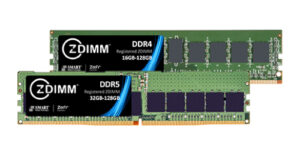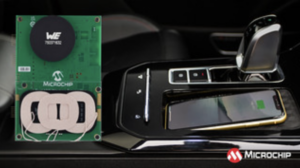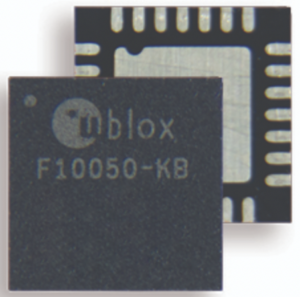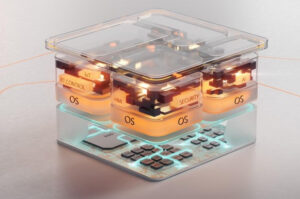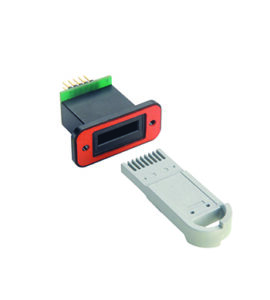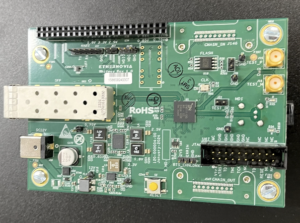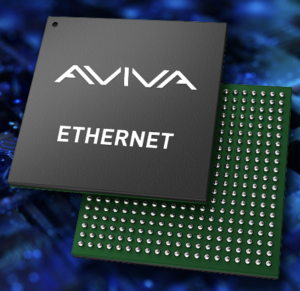Efinix announced a line of FPGA solutions designed specifically for the automotive industry to drive forward the long-term design and development of the rapidly growing numbers of electronic applications in-and-outside vehicles. The line, now automotive qualified, and Efinix’s Efinity tool suite that has achieved ISO26262 certification extend the company’s capabilities for automotive manufacturers. The FPGA solutions for […]
Applications
Memory modules ensure maximum uptime in data center terms and HPC platforms
SMART Modular Technologies, Inc. has unveiled its latest innovation – the Zefr ZDIMM memory modules. Designed for data centers, hyperscalers, high-performance computing (HPC) platforms, and other memory-intensive environments, the ZDIMM modules offer unparalleled reliability to ensure maximum availability of computing resources. In response to the critical need for dependable memory solutions in data centers where […]
Root-of-trust devices accelerate secure manufacturing and deployment
Microchip Technology is helping make embedded security solutions more accessible with its CEC1736 TrustFLEX devices. The CEC1736 Trust Shield family is a microcontroller-based platform root of trust solution enabling cyber resiliency for data centers, telecom, networking, embedded computing, and industrial applications. Now, as part of the TrustFLEX platform, the devices are partially configured and provisioned with Microchip-signed […]
Qi 2.0 reference design offers efficient control and automotive integration
Microchip Technology has released a Qi 2.0 dual-pad wireless power transmitter reference design. Powered by a single dsPIC33 Digital Signal Controller (DSC), the Qi2 reference design offers efficient control for optimized performance. A key feature of the new Qi2 standard, recently released by the Wireless Power Consortium (WPC), is the introduction of a Magnetic Power Profile (MPP) […]
Embedded GNSS IC enhances IoT positioning accuracy
u-blox has announced F10, the company’s first dual-band GNSS (Global Navigation Satellite Systems) platform combining L1 and L5 bands to offer enhanced multipath resistance and meter-level positioning accuracy. The platform caters to urban mobility applications, such as aftermarket telematics and micromobility. Applications that use GNSS receivers for accurate positioning are on the rise. Yet, current […]
Computer-on-modules simplify embedded and edge computing integration
congatec has introduced the aReady.COM product family, the first stage of its innovative aReady. strategy. aReady.COMs offer significantly smoother implementation of embedded and edge computing technology by providing high-performance embedded building blocks, ranging from Computer-on-Modules (COM) to cloud. aReady.COMs integrate application-ready hypervisor, operating system, and IIoT software configurations that customers can customize to their requirements. […]
Industrial memory tokens from ATEK offer advanced reliability for industrial applications
ATEK Access Technologies (ATEK) has expanded its Datakey RUGGEDrive™ lineup with the introduction of the Industrial UFX Series. This new series enhances the RUGGEDrive range by offering USB flash drive capabilities designed for industrial applications. It features operation across industrial temperature ranges and the option for pSLC NAND flash for enhanced reliability. The Industrial UFX […]
Transceivers designed to power software-defined vehicles
Ethernovia, Inc. announced the sampling of a scalable family of automotive PHY transceivers that scale from 10 Gbps to 1 Gbps over 15 meters of automotive cabling at the industry’s lowest power, critical for software-defined vehicles (SDV) and to deliver the highest level of safety for the next generation of intelligent driving systems and data-rich […]
UBM controllers targeted at data canter and storage management applications
Microchip Technology has introduced the EEC1005-UB2 Universal Backplane Management (UBM) controller family, aimed at enhancing system versatility, ensuring standards-based operation, and offering cost savings in data center and storage applications. These generic and easily configurable UBM devices are designed for use on hard drive backplanes, facilitating storage enclosure management and communication with computing host systems […]
Multi-gigabit asymmetrical Ethernet devices target next-gen vehicles
AVIVA Links, Inc. announced the industry’s first family of multi-gigabit asymmetrical Ethernet devices based on the Automotive SerDes Alliance Motion Link Ethernet (ASA-MLE) draft specification. The new products include Ethernet PHYs, Switches, CSI-2 bridge ICs, and Zonal Aggregators, all of which are optimized for ultra-high bandwidth asymmetric video and control links. These devices are designed […]

